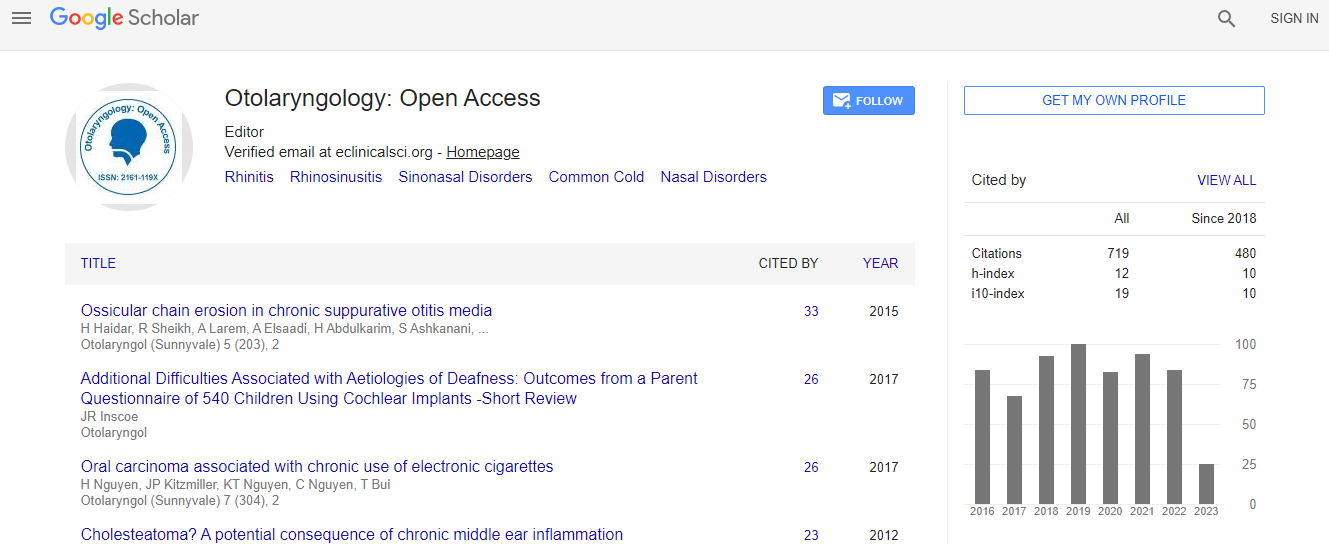Our Group organises 3000+ Global Conferenceseries Events every year across USA, Europe & Asia with support from 1000 more scientific Societies and Publishes 700+ Open Access Journals which contains over 50000 eminent personalities, reputed scientists as editorial board members.
Open Access Journals gaining more Readers and Citations
700 Journals and 15,000,000 Readers Each Journal is getting 25,000+ Readers
Google Scholar citation report
Citations : 925
Otolaryngology: Open Access received 925 citations as per Google Scholar report
Otolaryngology: Open Access peer review process verified at publons
Indexed In
- Index Copernicus
- Google Scholar
- Sherpa Romeo
- Open J Gate
- Genamics JournalSeek
- RefSeek
- Hamdard University
- EBSCO A-Z
- OCLC- WorldCat
- Publons
- Geneva Foundation for Medical Education and Research
- ICMJE
Useful Links
Recommended Journals
Related Subjects
Share This Page
Vowel category formation in Korean-English bilingual children
5th Global Summit and Expo on Head, Neck and Plastic Surgery
Sue Ann Lee
Texas Tech University Health Sciences Center, USA
Posters & Accepted Abstracts: Otolaryngol (Sunnyvale)
Abstract
One of the long-standing theoretical issues in bilingualism is whether bilingual children develop one or two linguistic systems in the learning of their respective languages. The one-system hypothesis suggests that children initially posit linguistic rules common to both languages; then they differentiate the two as they master higher linguistic knowledge. The two-system hypothesis, on the other hand, holds that children in bilingual environments differentiate both systems at an early age and those children are capable of keeping the two linguistic systems separate as these develop. Though the onesystem hypothesis has been challenged on both methodological and empirical grounds, most research on this issue has dealt with the lexical, syntactic and phonological domains but whether bilingual children develop one or two distinct phonetic systems has not been fully explored. My colleague and I have investigated phonetic category formation in Korean-English bilingual children and found that phonetic category of stop consonant changes as durations of exposure of two languages increases. During this presentation, I will present English and Korean vowel data produced by 57 Korean-English bilingual children at 3, 5, 7 and 10 years of age as compared to 60 monolingual English or 60 Korean children. We found developmental patterns and multi-dimensional representation of phonetic categories between vowels and stops. Specifically, 3 and 5 year-olds distinguished vowels but not the stop categories of Korean and English whereas 7 and 10 year-olds distinguished both vowels and stops. Results suggest that the phonetic systems of bilingual children continue to evolve during the developmental process and that bilingual children require different durations of exposure per speech category in order to establish detailed phonetic categories across languages.Biography
Email: sueann.lee@ttuhsc.edu

 Spanish
Spanish  Chinese
Chinese  Russian
Russian  German
German  French
French  Japanese
Japanese  Portuguese
Portuguese  Hindi
Hindi 
